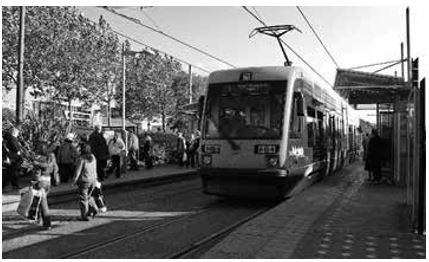A group of individuals who do not receive community support researched what stops people going out and getting involved in their local area. Liz Tilly and the Building Bridges Research Group found what made them anxious and looked at how to address this
Feeling alone and not connected to others where you live affects many people, especially those with a learning disability, and has become an important political issue.
The Building Bridges Research Group – eight people who do not receive home or community support services – carried out research to find out some of the things that stop us getting involved in local places with local people where we can make and keep friends. We made picture cards and used photos to show the findings of our group discussions.
There were positive experiences of joining in and using community places where we were made to feel welcome, such as church coffee morning drop-ins, clubs specifically for people with a learning disability, libraries and sports centres. We liked it when people said hello, talked to us and treated us with kindness.
The sports centre gym was very important, as were activities such as swimming and keep fit classes. Gym membership cards, issued to people who receive disability benefits that allow free off-peak use of the gym, were valued for giving us status as belonging to a local community facility. Pub use was limited for a number of reasons, including not feeling welcome.
Feeling Safe When Out
We said that needing to feel safe when out was really important. Many of us expressed fears about being out in the dark, which was made worse by hearing about news reports of stabbings, acid attacks and shootings. People were also afraid to use alleyways in the dark.
Travelling to new places caused anxiety – everyone had experienced getting lost in unfamiliar places and was frightened about this happening again. Everybody was afraid of using public transport at night. We said we felt safer when we had a mobile phone on us, which was switched on and had some credit.
Road safety was also an issue – people were frightened to cross busy roads, which was made worse by the memory of a friend who died in a hit-and-run incident a few years ago.
Everyone wanted more community activities to do, especially in the daytime, such as ten pin bowling and coach trips. People also mentioned unrealised dreams – visiting London, travelling abroad, going to football matches and pop concerts and just having meals out at a pub.
It was important that things should start later in the day so people could use their concessionary bus passes after 9.30am.
Evening activities were also of interest although less so because of the fear of travelling when it was dark.
The chief causes of anxiety creating barriers to community involvement were: going to new places alone; meeting new people; large groups; crowded places; trying to start conversations; getting lost; having to ask for directions; no wi-fi or internet access for map apps; travelling in the rush hour; evening travel; using more than one bus; understanding bus timetables; and frequent changes to bus routes and numbers.
Interestingly, the main barriers are not people being unwelcoming or a lack of money. They are much more about practical issues, such as finding out what is available and help and support so people can start getting involved and travel safely.
This project has shown how we all experience a lot of anxiety and fear, mainly to do with community safety. We have thought about what should change to enable more community inclusion and so help reduce isolation and loneliness.
We will be doing more research over the next year with other people with a learning disability to see if they agree with the barriers that we have identified. Then we need to find out what they think should change so that they and other people with a learning disability can be more included.
- The research group comprises eight people with a learning disability in the West Midlands. It is part of Building Bridges Training: www.building-bridges-training.org
Being safe and welcome: what would help
- Easy-read information about social and leisure activities, including on how to get there
- Advocacy for people with difficult family situations so they can spend their own money on community activities
- Support to go to community places for the first few times
- Opportunities to do things with support where we don’t have the skills to arrange it ourselves, such as going to concerts or for meals in a pub
- Places in the community should be more welcoming
- Making staff at sports and leisure venue more aware of the different people in their community who might need support to use the facilities
- Better understanding of “invisible disability”, helped by training sessions delivered by people with a learning disability
- Using stickers to identify safe places where people with a learning disability who have problems or are scared can go and receive a welcome and practical help
- More police about to improve community safety
